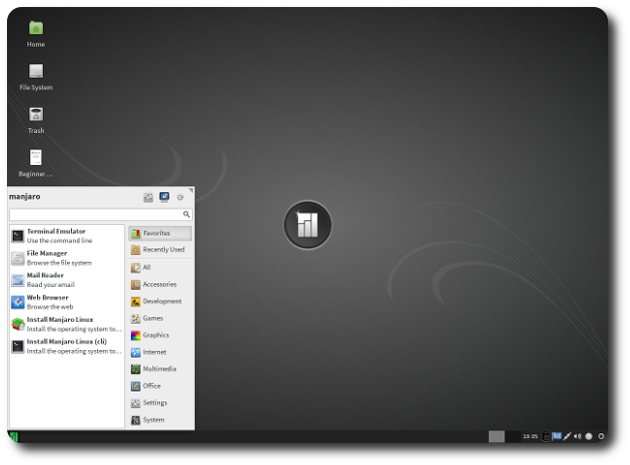2 Aug 2014
1 Aug 2014
Doudou Linux 2.1 Guide
Download: -
Link: - http://download.doudoulinux.org/docs/doudoulinux-2.1-quickstart-en.pdf
Link: - http://www.doudoulinux.org/web/english/documentation-7/index.html
Doudou Linux 2.1
Download: -
Link: - http://doudou.hostingxtreme.com/doudoulinux-hyperborea-2.1-en.iso
Puppy Slacko 5.7 install Guide
Download: -
Link: - http://puppylinux.org/main/How%20NOT%20to%20install%20Puppy.htm
Puppy Slacko 5.7
Download: -
Link: - http://distro.ibiblio.org/puppylinux/puppy-slacko-5.7/slacko-5.7-NO-pae.iso
Arch Linux Installation guide
Download: -
Link: - https://wiki.archlinux.org/index.php/Installation_guide
31 Jul 2014
Manjaro XFCE Edition 0.8.10
Download: -
Link: - http://jaist.dl.sourceforge.net/project/manjarolinux/release/0.8.10/xfce/manjaro-xfce-0.8.10-i686.iso
Bodhi Linux 2.4.0 Installation Guide
Download: -
Link: - http://wiki.bodhilinux.com/doku.php?id=installation_instructions
Bodhi Linux 2.4.0
Download: -
Link: - http://cznic.dl.sourceforge.net/project/bodhilinux/2.4.0/bodhi-2.4.0-32.iso
30 Jul 2014
openSUSE 13.1 Installation Quick Start
Download: -
Link: - http://activedoc.opensuse.org/book/opensuse-start-up/chapter-1-installation-quick-start
Mageia 4.1 Installation Guide
Download: -
Link: - https://doc.mageia.org/installer/4/en/content/index.html
Link: - https://wiki.mageia.org/en/First_step_with_Xfce
29 Jul 2014
1980 : NSFNET: The first internet backbone
During the 1980s, the National Science Network funded several supercomputing centers around the United States. And in 1986 the agency created a TCP/IP-based network called NSFNET to link those supercomputing centers together and allow researchers across the country to use them. The primary goal was to allow computer science researchers to log into the supercomputers and perform academic research. But NSF decided not to limit NSFNET to that purpose, allowing the network to be used for a wide variety of academic purposes. As a result, the NSFNET became the internet's "backbone," the high-speed, long-distance network that allowed different parts of the internet to communicate. Schools that didn't have a direct connection to the NSFNET worked together to build regional networks that linked them to each other and to the nearest NSF node. This shows the NSFNET as it existed in 1992. By this time, there were 6,000 networks connected to NSFNET, with a third of them located overseas. That meant that students and faculty at a growing number of universities had access to email, Usenet, and even a recently-invented application called the World Wide Web. And although the NSFNET was officially restricted to non-commercial use, for-profit companies were increasingly connecting to the network as well, setting the stage for the commercialization of the internet that followed.
1984: ARPANET becomes the internet
1982: the ARPANET community grows
As the ARPANET entered its second decade, it was still largely confined to the United States. Academic institutions depended on federal funding to join the network, so the number of nodes expanded slowly. By 1982, the network only had about 100 nodes. But that was enough to support a vibrant online community. Long before Facebook and Twitter, ARPANET allowed computer scientists who had access to the network to stay in touch. A new bulletin board system called Usenet was invented in 1980 and caught on quickly. Usenet was organized by topic, allowing users to swap programming tips, recipes, jokes, opinions about science fiction, and much more.
1973: ARPANET goes international
In 1973, the ARPANET became international, with a satellite link connecting Norway and London to the other nodes in the United States. Hawaii also joined the network by satellite. At this point, the network had around 40 nodes. New ARPANET applications had begun to emerge. Email was invented in 1971 by a BBN engineer named Ray Tomlinson, who also invented the use of the "@" symbol in email addresses. The File Transfer Protocol, which is still used today, allowed ARPANET users to send files to each other.
1970: ARPANET expands
By the end of 1970, ARPANET had grown to 13 nodes, including East Coast schools like Harvard and MIT. Among the early nodes was Bolt, Beranek, and Newman (BBN), an engineering consulting company that did the engineering work required to build ARPANET. Each ARPANET site had a router known as an Interface Message Processor. These cost $82,200, or half a million dollars in today's money.
1969 : Before the internet, there was the ARPANET
ARPANET, the precursor to the modern internet, was an academic research project funded by the Advanced Research Projects Agency, a branch of the military known for funding ambitious research projects without immediate commercial or military applications. Initially, the network only connected the University of Utah with three research centers in California. ARPANET was a test of a then-novel technology called packet-switching, which breaks data into small "packets" so they can be transmitted efficiently across the network. It also had a more practical goal: allowing more efficient use of expensive computing resources. Computer scientists sometimes used ARPA money to buy computers, and the agency hoped that ARPANET would allow universities to share these expensive resources more efficiently. One of the first ARPANET applications was Telnet, which allowed a researcher at one ARPANET site to log into a computer at another site.
Linux Mint 17 Installation Guide
Download: -
Link: - http://www.linuxmint.com/documentation/user-guide/Cinnamon/english_17.0.pdf
Linux Mint 17 Qiana
Download: -
Link: - http://mirror.ufs.ac.za/linuxmint//stable/17/linuxmint-17-cinnamon-32bit-v2.iso
Fedora 20 Installation Guide
Download: -
Link: - http://docs.fedoraproject.org/en-US/Fedora/20/html/Installation_Guide/
Fedora 20 Desktop Edition
Download: -
Link: - http://download.fedoraproject.org/pub/fedora/linux/releases/20/Live/i386/Fedora-Live-Desktop-i686-20-1.iso
28 Jul 2014
Kubuntu 14.04 LTS
Download:-
Link: - http://cdimage.ubuntu.com/kubuntu/releases/trusty/release/kubuntu-14.04.1-desktop-i386.iso
Link: - http://cdimage.ubuntu.com/kubuntu/releases/trusty/release/kubuntu-14.04.1-desktop-amd64.iso
Ubuntu Server for cloud
Download:-
Link: - http://releases.ubuntu.com/14.04.1/ubuntu-14.04.1-server-amd64.iso
Ubuntu 14.04.01 Desktop Guide
Download:
Link: - https://wiki.ubuntu.com/DocumentationTeam/SystemDocumentation/UbuntuDesktopGuide
Subscribe to:
Comments (Atom)






































